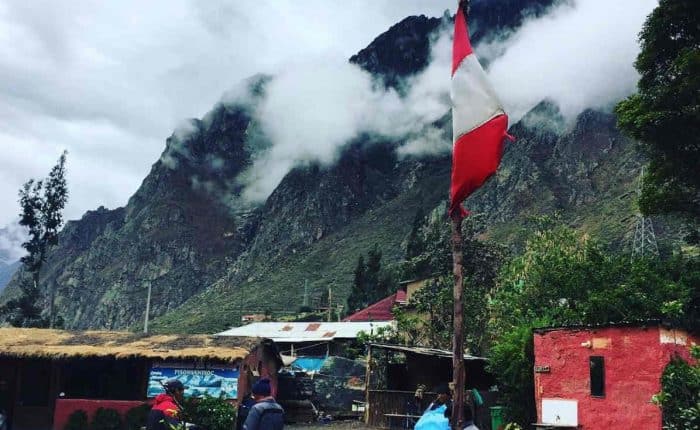So, you want to move abroad to Peru? Good choice. Inca folklore, Machu Picchu, ceviche, and that famous Peruvian chicken that keeps popping up in restaurants in the States…there is a lot to love about this historic South American nation. With a wide range of residency and visa options to choose from, each with their own qualifications and perks, choosing the right one can be dizzying for wannabe expats looking to move abroad. Let’s look through the most common ways of living in Peru for North Americans
Tourist Visa
The tourist visa is the quickest and easiest type of document a U.S. or Canadian citizen can obtain to enter Peru. This is achieved on arrival to the airport in Peru and takes as little time as stamping a passport. This is the way that most tourists and backpackers enter the country. With this visa, travelers can spend up to 183 days in Peru without needing to renew the document. At the end of this period, tourist visa holders will need to leave the country. Returning to Peru will renew the visa for another 183 days.
Some people choose to use this method to move to Peru on a long-term basis, leaving the country every six months to renew the tourist visa. This method is quick and requires no more documentation than a plane ticket and passport, but you are missing out on some benefits of applying for a true residency permit – plus, you cannot work in Peru on this visa.
Work Visa
If your intention is to work while living abroad in Peru, you will need to apply for a work or business visa. The Peruvian government states that a working visa can be granted to any foreigner entering the country for the purposes, either independently or as an employee, of a lucrative endeavor that will benefit the national economy. You will need an employment contract, administrative relationship, or services agreement.
Generally, depending on the status of your employer, this visa is good for either 183 or 365 days, but can be renewed in-country for the duration of the employment.
Investor Visa
For those interested in moving to Peru with enough capital to make a sizable investment, there are fast-tracked ways of getting residency. The main conditions for an investment visa include proving that you are capable of settling, developing, or managing single or multiple investments in Peru. A real estate investment must be valued at a minimum of $154,000 USD, while a business investment must be at $30,000, so it’s important to check on the current legal requirements of all visas before applying.
Retirement Visa
Peru’s retirement visa (Rentista Visa) is one of the more favorable forms of residency for qualified applicants looking to move to Peru. This visa requires that applicants have a permanent $1000 monthly income while living in the country, plus $500 for each dependent applying.
You will need to prove your monthly private/government pensions and show a marriage certificate for any spouse applying. In its final form, this visa is permanent and will not need to be renewed, though you will have to check in annually to confirm you are still living in the country.
Experience the Insider community that takes your international lifestyle to the next level. Download your FREE guide
"18 Steps to Implementing Your Plan B" instantly!
The main benefit of the retirement visa for those wanting to move to Peru is that Rentista Visa holders do not have to pay annual resident taxes, and they are exempt from Peruvian Income Tax. Retirees can also import possessions from home, tax and duty-free.
The Process
While each of these visa types have different initial requirements, the primary method for application and acceptance are largely identical (except for some differing forms).
You will need to contact your Peruvian consulate in the U.S. or Canada, identify the required documents, and make an appointment. Your home state will need to authenticate these documents, and a background check is required. Upon approval, you can obtain your Peruvian identification card for foreign residents and open a bank account, purchase a cell phone and internet plan, and travel within Peru without a passport. There will be a final appointment in Peru after you have arrived in the country, during which you will need to provide many of the same documents used at the consulate (now legally translated into Spanish) to the immigration office in order to receive your residency.
In order to maintain your visa status, you will likely have to remain in Peru for a total of 6 months out of the year, not necessarily in succession. Sometimes investor visas allow for shorter time requirements in the country, so always contact a lawyer before going this route.
Permanent Residency and Path to Citizenship
Once you have maintained your chosen visa’s status for a minimum of three years, you will qualify for a permanent residency visa. This eliminates the in-country time commitments and allows you to travel freely. This permanent residency is valid for five years, after which it can be renewed for an additional five years or you can apply for Peruvian citizenship.
Author Bio:
Tyler Sorce is an American writer and digital nomad, currently living in Lisbon, Portugal. In a past life he was a chef in Manhattan and Paris, follow his travels and favorite dishes on Instagram.
Like Our Articles?
Then make sure to check out our Bookstore... we have titles packed full of premium offshore intel. Instant Download - Print off for your private library before the government demands we take these down!







